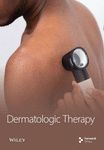Serum Neurofilament Light Chain Levels Correlate With Skin Inflammation and Scratch Lesions in Patients With Pruritus
Abstract
Background: Neurofilament light chain (NfL) has been identified as a biomarker in neuroaxonal injury. Cutaneous nerve injury resulting from inflammation and/or forced scratching may also potentially affect serum NfL (sNfL) levels.
Objectives: We aimed to explore the relationship between sNfL levels and the severity of skin inflammation and scratch lesions in patients with pruritus.
Methods: In this cross-sectional pilot study, we measured the sNfL levels of 10 patients with pruritus of different aetiologies, and calculated age- and BMI-adjusted sNfL percentiles based on a normative database consisting of 4532 control individuals. Next, we investigated the relationship between the levels of sNfL and the severity of skin inflammation and scratching injuries in these patients using a newly-created Skin Inflammation and Scratch Lesions (SISL) score.
Results: A positive correlation was observed between sNfL levels and the severity of skin inflammation and scratch lesions as measured by the SISL score (Spearman’s rho = 0.70, p = 0.031). When correlated separately, both the “skin inflammation only” and “scratch lesions only” scores correlated positively with sNfL levels (Spearman’s rho = 0.68, p = 0.031; Spearman’s rho = 0.66, p = 0.041, respectively).
Conclusions: sNfL may be a potential biomarker for cutaneous nerve injury associated with skin inflammation and/or scratching.
Conflicts of Interest
The authors declare no conflicts of interest.
Open Research
Data Availability Statement
The data are available from the corresponding author upon reasonable request.




